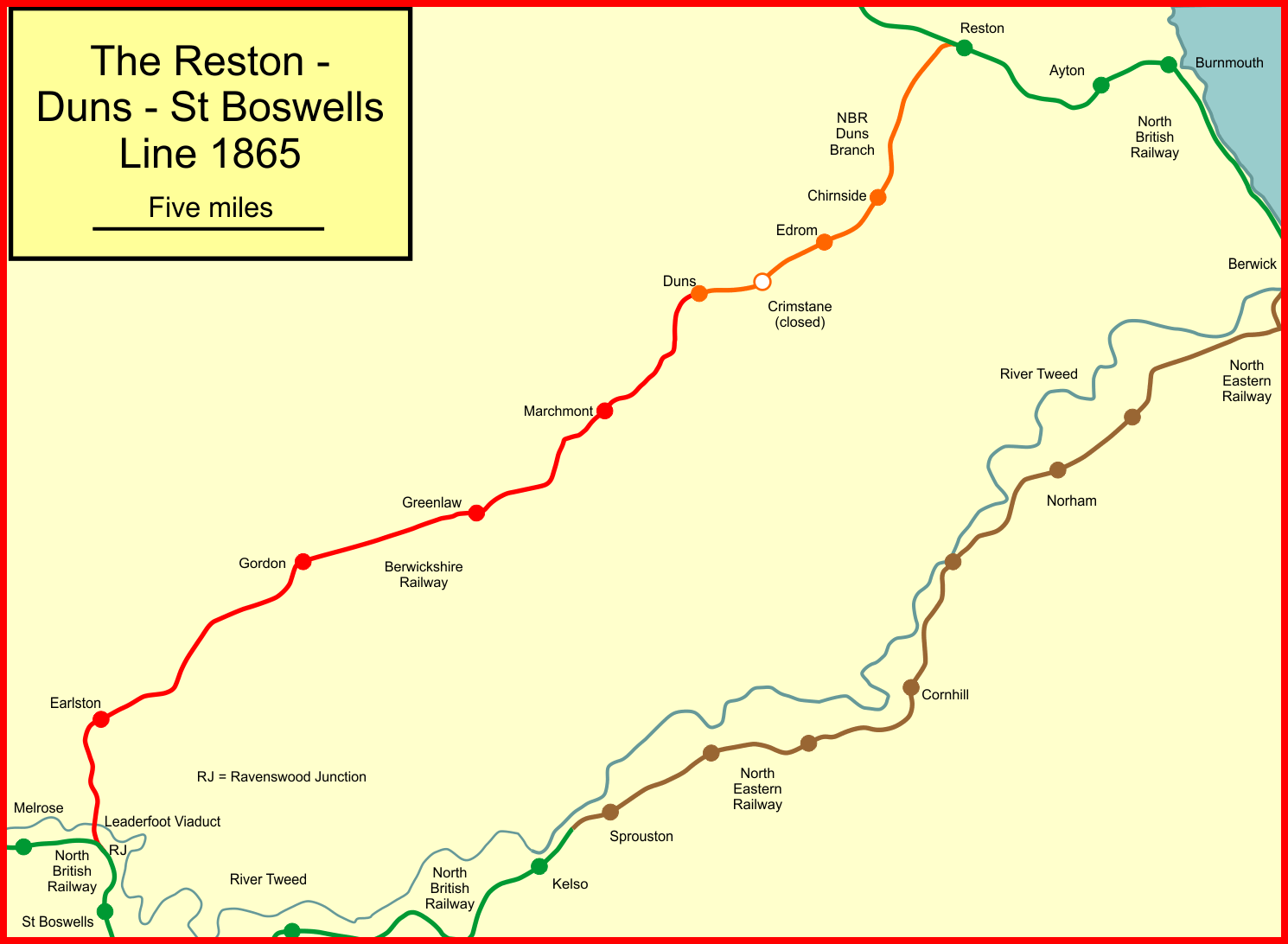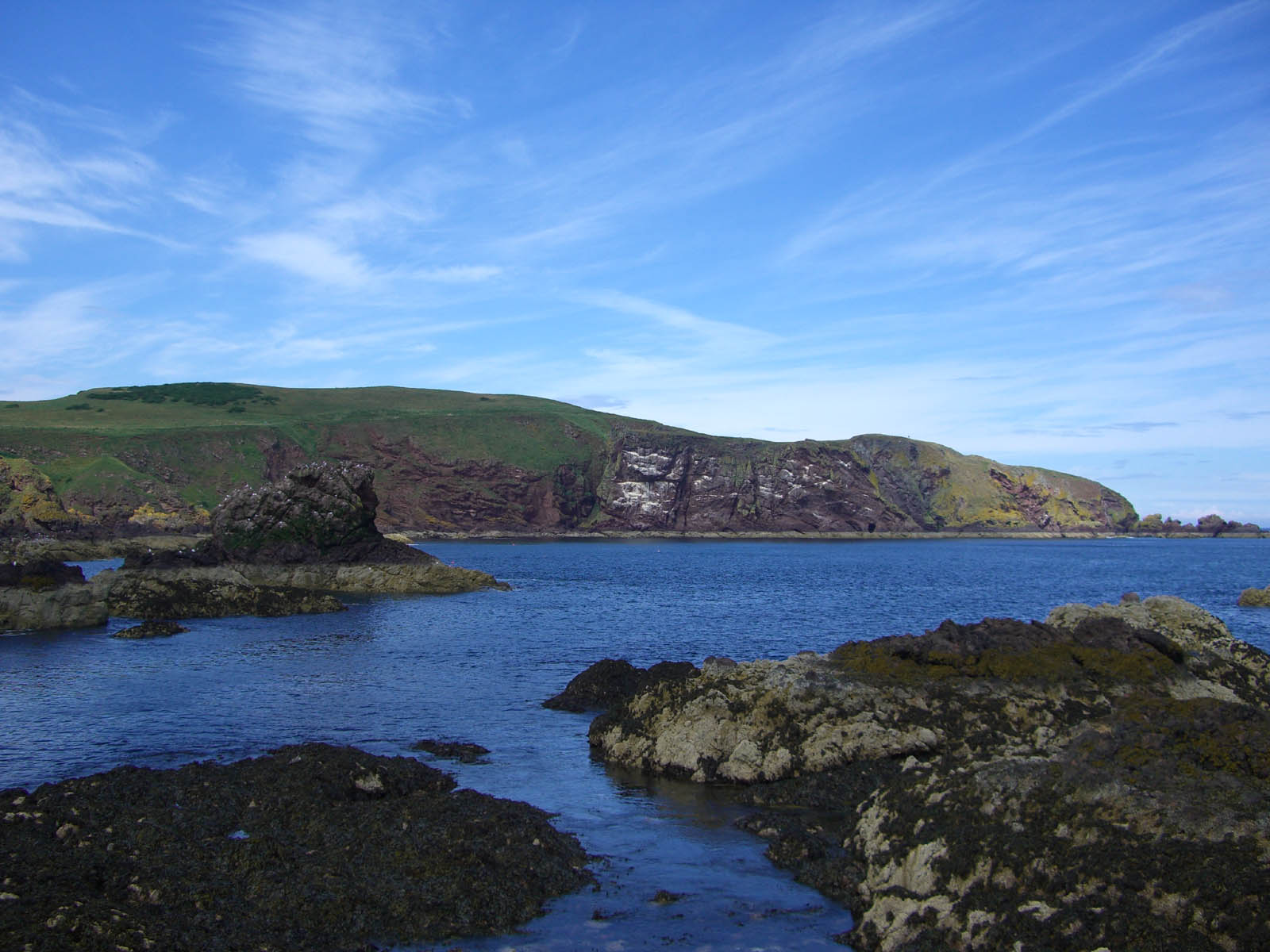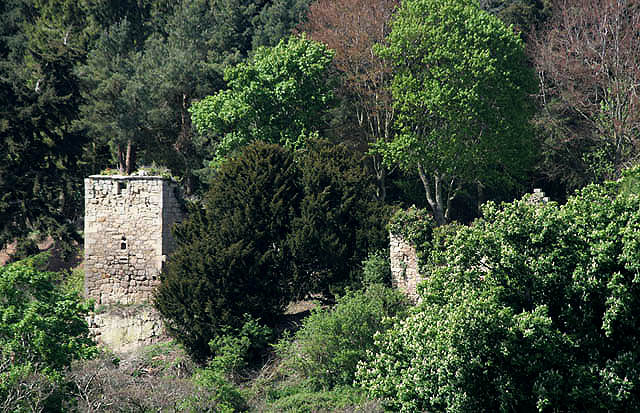|
Edrom
Edrom is a parish and small village in the pre-1975 ancient county of Berwickshire, now an administrative area of the Scottish Borders region of Scotland. The rural parish of Edrom is in east central Berwickshire being bounded on the north by the parishes of Bunkle and Preston and Chirnside, on the east by the Parishes of Chirnside, Hutton and Whitsome and Hilton, on the south by the parishes of Whitsome and Hilton, Swinton and Fogo and on the west by the parishes of Langton and Duns. It includes the nearby village of Allanton. Locality Edrom lies three miles north-east of Duns, and close to the Whiteadder Water. Nearby are Allanbank, Allanton, the Blackadder Water, Blanerne Castle, Chirnside, Chirnsidebridge, Foulden, Gavinton, Hutton, Kimmerghame House, Manderston House, Preston, Wedderburn Castle, and the former Kelloe House. Village The village contains several notable buildings, including the Manse, 1881, and the former school, early 19th century. The scho ... [...More Info...] [...Related Items...] OR: [Wikipedia] [Google] [Baidu] |
Berwickshire Railway
The Duns Branch and the Berwickshire Railway together formed a through railway route from Reston, near Berwick-upon-Tweed, to St Boswells in the Scottish Borders. The line was promoted in two stages. The first was from Reston on the Edinburgh to Berwick main line to Duns (then spelt ''Dunse'', and the county town of Berwickshire); it opened by the North British Railway in 1849. The second section was promoted independently by the Berwickshire Railway Company, but with considerable assistance from the North British Railway. It opened most of its line in 1863, but delay in constructing a large viaduct, Leaderfoot Viaduct, led to the opening of the final section of the line being delayed until 1865. The North British Railway had conceived the line as a strategic trunk route across southern Scotland, but this development was never realised, and the line was never heavily used. During the violent rainstorm in the area in August 1948 the line was breached west of Earlston, and the p ... [...More Info...] [...Related Items...] OR: [Wikipedia] [Google] [Baidu] |
Berwickshire
Berwickshire ( gd, Siorrachd Bhearaig) is a historic county, registration county and lieutenancy area in south-eastern Scotland, on the English border. Berwickshire County Council existed from 1890 until 1975, when the area became part of the Borders region, with most of the historic county becoming part of the lower-tier Berwickshire district. Berwickshire district was abolished in 1996, when all the districts in the Borders region merged to become the Scottish Borders council area. The county takes its name from Berwick-upon-Tweed, its original county town, which was part of Scotland at the time of the county's formation in the twelfth century, but became part of England in 1482 after several centuries of swapping back and forth between the two kingdoms. After the loss of Berwick, Duns and Greenlaw both served as county town at different periods. The low-lying part of Berwickshire between the Tweed and the Lammermuirs is known as "the Merse", from an old Scots w ... [...More Info...] [...Related Items...] OR: [Wikipedia] [Google] [Baidu] |
Preston, Scottish Borders
Preston is a small village in the ancient county of Berwickshire, now an administrative area of the Scottish Borders region of Scotland. It lies within the local Abbey St Bathans, Bonkyl & Preston Community Council area. The united Parishes of 'Bunkle' and Preston, situated at the foot of the Lammermuir Hills, are bordered on the north by the Parishes of Abbey St Bathans and Coldingham, on the east by the Parishes of Coldingham and Chirnside, on the south by the Parishes of Edrom and Duns and on the east by the Parishes of Duns and Abbey St. Bathans. Locality Preston is on the A6112 road and the B6355, near Duns. Places nearby include Bonkyl Kirk, Chirnside, Cranshaws, the Crosshall cross, Eccles, Edin's Hall Broch, Edrom, Greenlaw, Greenlaw County Hall, Gordon, Hume Castle, the Jim Clark Room, Manderston House, Polwarth Parish Church. The Village The Old Parish Church was an outlying enclave of the diocese of Dunkeld, and a possession of its bishop in 1275 ... [...More Info...] [...Related Items...] OR: [Wikipedia] [Google] [Baidu] |
Allanbank, Scottish Borders
Allanbank is a village near Allanton, in the Scottish Borders area of Scotland, in the historic county of Berwickshire. Allanbank Chapel was dedicated to St. Mary and was located in a small field named Chapel Haugh. Nearby places include Blackadder Water, Duns, Earlston, Edrom, Gavinton, Kelloe, Kimmerghame House, and the Whiteadder Water. See also *Pearlin Jean Pearlin Jean is the name given to a ghost, who purportedly haunts the Allanbank Courtyard, situated in Allanton, Berwickshire Berwickshire ( gd, Siorrachd Bhearaig) is a historic county, registration county and lieutenancy area in south-e ... * List of places in the Scottish Borders References * Ewart, G (2008c) 'Allanbank House, Scottish Borders (Edrom parish), monitoring', ''Discovery Excav Scot, New, vol.9'' Cathedral Communications Limited, Wiltshire, England. Page 157 * Strang, C A (1994) 'Borders and Berwick:an illustrated architectural guide to the Scottish Borders and Tweed valley, RIAS / La ... [...More Info...] [...Related Items...] OR: [Wikipedia] [Google] [Baidu] |
Allanton, Scottish Borders
Allanton ( gd, Baile Alain) is a small village in the Scottish Borders region of Scotland. Historically part of Berwickshire, for many years it was part of the estate of Blackadder House, which was demolished around 1925. Locality Allanton is in Edrom Parish, a rural Parish of east central Berwickshire being bounded on the north by the Parishes of Bunkle and Preston and Chirnside, on the east by the Parishes of Chirnside, Hutton and Whitsome and Hilton, on the south by the Parishes of Whitsome and Hilton, Swinton and Fogo and on the west by the Parishes of Langton and Duns. Allanton lies south of Chirnside and west of the border with Northumberland. Its closest market towns are Duns and Berwick-upon-Tweed. The village stands high above the confluence of the Whiteadder and Blackadder Waters, the site of two bridges. Allanton Bridge forms two spans over the Whiteadder Water, dated 1841, by Robert Stevenson and Sons. Blackadder Bridge spans the Blackadder Water, dat ... [...More Info...] [...Related Items...] OR: [Wikipedia] [Google] [Baidu] |
Duns, Scottish Borders
Duns is a town in the Scottish Borders, Scotland. It was the county town of the historic county of Berwickshire. History Early history Duns Law, the original site of the town of Duns, has the remains of an Iron Age hillfort at its summit. Similar structures nearby, such as the structure at Edin's Hall Broch, suggest the area's domestic and defensive use at a very early stage. Middle ages The first written mention of Duns is prior to 1179, when a 'Hugo de Duns' witnessed a charter of Roger d'Eu, of a grant of the benefice of the church of Langton to Kelso Abbey. The town is further mentioned when a 'Robert of Douns' signed the Ragman Roll in 1296. The early settlement was sited on the slopes of Duns Law, close to the original Duns Castle built in 1320 by the Earl of Moray, nephew of Robert the Bruce. The town was frequently attacked by the English in border raids and as they headed north to the Lothians. In 1318 at Duns Park, the Earl of Dunbar, Sir James Douglas, and ... [...More Info...] [...Related Items...] OR: [Wikipedia] [Google] [Baidu] |
Scottish Borders
The Scottish Borders ( sco, the Mairches, 'the Marches'; gd, Crìochan na h-Alba) is one of 32 council areas of Scotland. It borders the City of Edinburgh, Dumfries and Galloway, East Lothian, Midlothian, South Lanarkshire, West Lothian and, to the south-west, south and east, the English counties of Cumbria and Northumberland. The administrative centre of the area is Newtown St Boswells. The term Scottish Borders, or normally just "the Borders", is also used to designate the areas of southern Scotland and northern England that bound the Anglo-Scottish border. Geography The Scottish Borders are in the eastern part of the Southern Uplands. The region is hilly and largely rural, with the River Tweed flowing west to east through it. The highest hill in the region is Broad Law in the Manor Hills. In the east of the region, the area that borders the River Tweed is flat and is known as 'The Merse'. The Tweed and its tributaries drain the entire region with the rive ... [...More Info...] [...Related Items...] OR: [Wikipedia] [Google] [Baidu] |
Fogo, Scottish Borders
Fogo is a village in the county of Berwickshire, in the Borders of Scotland, 3 miles south of Duns, on the Blackadder Water. The name Fogo means "foggage pit, den or hollow" as well as a portmanteau of ''fog'' and ''hollow''. The village contains two Category A listed buildings; the bridge, a single span, round-arched bridge spanning Blackadder Water and the church, founded c.1100 and rebuilt in 1755. Other places nearby include the Crosshall cross, Gavinton, the Greenknowe Tower, Greenlaw, Edrom Edrom is a parish and small village in the pre-1975 ancient county of Berwickshire, now an administrative area of the Scottish Borders region of Scotland. The rural parish of Edrom is in east central Berwickshire being bounded on the north by ..., Eccles, Hume Castle, Leitholm, Longformacus, Polwarth, Swinton, and Westruther. See also * Fogo Priory, Prior of Fogo * List of places in the Scottish Borders * List of places in Scotland References External links G ... [...More Info...] [...Related Items...] OR: [Wikipedia] [Google] [Baidu] |
Kelloe House
Kelloe House was a country house in the former Berwickshire, in the Parish of Edrom, in the Scottish Borders. The house has been demolished. Kelloe Mains and Kelloe Bridge remain. See also *George Buchan of Kelloe *Kelloe in County Durham *Allanbank * Allanton *List of places in the Scottish Borders *List of places in Scotland This list of places in Scotland is a complete collection of lists of places in Scotland. * List of burghs in Scotland * List of census localities in Scotland *List of islands of Scotland ** List of Shetland islands ** List of Orkney islands ** L ... External linksRCAHMS record for Kelloe House [...More Info...] [...Related Items...] OR: [Wikipedia] [Google] [Baidu] |
Blanerne Castle
Blanerne Castle is the remains of a 16th-century fortified house, located in the grounds of Blanerne House, an 18th-century country house between Chirnside and Preston in the Scottish Borders. The house and castle sit on the north bank of the Whiteadder Water, around north-east of Duns. The castle was the historical seat of the Lumsdaine family for over four centuries. The surviving remains are dated to the 16th century, although the site may have been occupied as far back as the 12th century. The remains include a keep or kitchen block, with a detached guard house to the west. The castle is protected as a Scheduled Ancient Monument. A popular Berwickshire rhyme refers to the medieval strengths of Blanerne and the nearby fortresses of Billie Castle, and Bonkyll Castle referring to their construction in the time of David I and their destruction following the Rough wooing: ''Bunkle, Billie and Blanerne ''Three castles strong as airn'' ''Built when Davie was a Bairn'' ''Theyll ... [...More Info...] [...Related Items...] OR: [Wikipedia] [Google] [Baidu] |
Whitsome
Whitsome is a small rural village in the Scottish Borders area of Scotland, on the B6437, near Duns, Fogo, Ladykirk, Leitholm and Swinton. Place-name meaning Whitsome derives from Old English ''hwit-husum'' "at the white houses". This may refer to white stone buildings, or houses painted white. The name has been recorded as the following over the centuries: * ''æt hwitum husum'', 984 (literally "at the white houses, -um being dative plural). * ''Huuithusum'', 1038 (double u was written since "w" could not be pronounced by the author) * ''Witsum'', 1124 (contracted form) See also *List of places in the Scottish Borders *List of places in Scotland This list of places in Scotland is a complete collection of lists of places in Scotland. * List of burghs in Scotland * List of census localities in Scotland *List of islands of Scotland ** List of Shetland islands ** List of Orkney islands ** L ... External links RCAHMS site record for Whitsome [...More Info...] [...Related Items...] OR: [Wikipedia] [Google] [Baidu] |
Swinton, Scottish Borders
Swinton is a small village in the Scottish Borders. It is in the former county of Berwickshire, around southeast of Duns, and northwest of the Anglo-Scottish border. History Swinton dates to the 11th century or earlier, and is associated with the Swinton family, who took their name from the settlement. In 1769, the village was re-designed and a market was created, now marked by the market cross. A parish church was built and still stands today. In the churchyard, the Swintons have their own burial enclosure. In 1843, the Free Church of Swinton was built, but in the 1900s the spire was removed and it became the local village hall. The main parish church was remodelled in 1910 by Robert Lorimer. Notable people * Daniel Laidlaw, recipient of the Victoria Cross Etymology The name of the village is a contraction of Swine Town, a name borne from the large number of wild boar the land was once inhabited by. Swinton House Swinton House, west of the village, dates in its curr ... [...More Info...] [...Related Items...] OR: [Wikipedia] [Google] [Baidu] |





